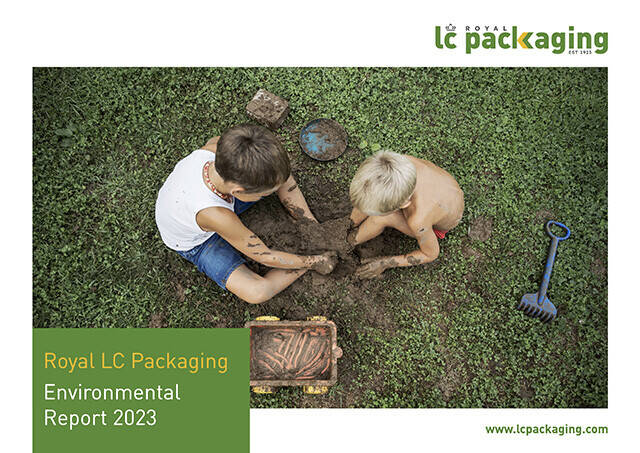GRI 305-1, 305-2, 305-3, 305-5
Climate action
20.6% greenhouse gas emission reduction from our value chain compared to base year 2021
Our goal to reduce emissions in our value chain by 2030, touches upon 6 out of 8 Sustainable Packaging criteria.
Goal
Reduce absolute scope 1 and 2 greenhouse gas emissions 50% by 2030, from base year 2021, and reduce scope 3 greenhouse gas emissions 50% within the same timeframe.
In base year 2021, 347,516 CO2e was emitted in Royal LC Packaging’s value chain. Meaning that by 2030, no more than 173,758 MT of CO2e may be emitted in our value chain.
Baseline
Royal LC Packaging’s emission reduction goal includes the company’s full operations and value chain, which includes the direct (Scope 1) and indirect emissions (Scope 2 and 3) of all our sales offices and warehouses, and our FIBC production facilities in Bangladesh and South Africa
Scope
In 2023, 275,886 MT CO2e was emitted in our value chain. This means a decrease of 20.6% (56,832 MT) compared to base year 2021.
Progress on goal
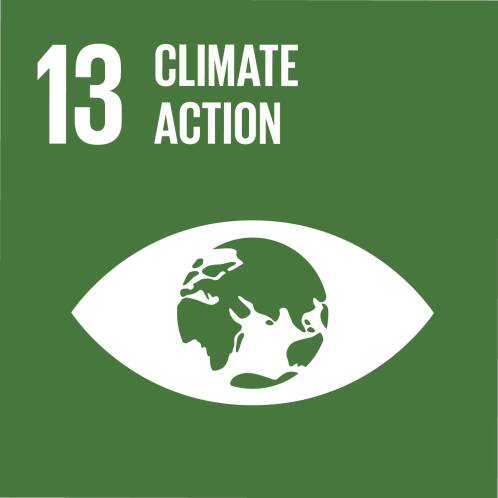

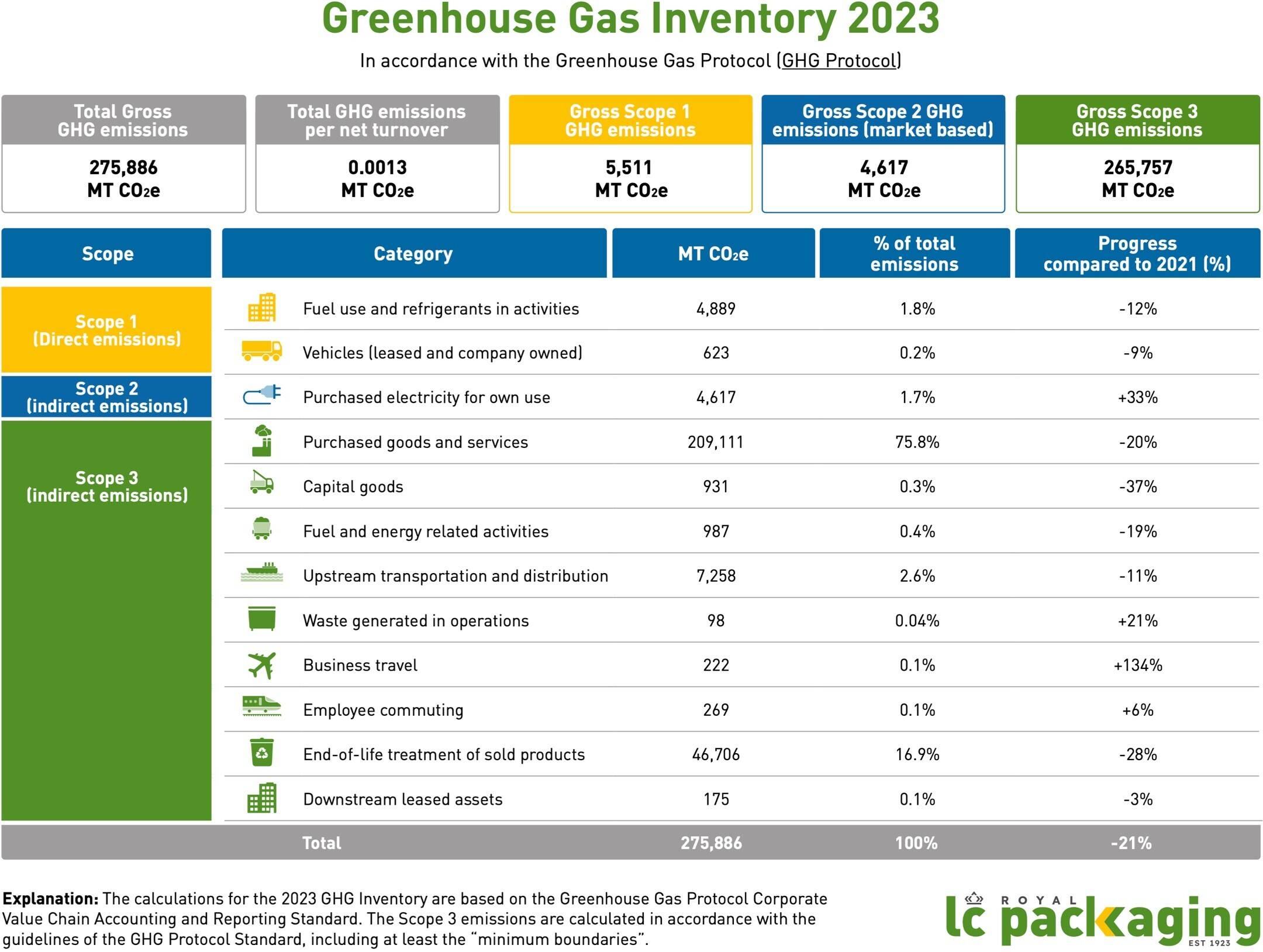
In 2023, data availability and quality improved significantly due to, among other things, better product-related data and lifecycle assessments that were conducted for our main product categories. Based on that data, base year 2021 and GHG Inventory 2022 have been recalculated and rectified in this report. Overall, in 2023, we achieved a 20.6% decrease of CO2e emissions compared to base year 2021, and a decrease of 12.8% compared to 2022.
A summary of the results:
A substantial decrease in product sales compared to base year 2021 drove the main reduction in emissions, as the categories ‘purchased goods’ and ‘end-of-life of sold products’ are closely linked to sales and contribute most to the greenhouse gas inventory.
Emissions related to ‘purchased goods’ decreased by 20.3% and to ‘end-of-life of sold products’ by 27.8%, compared to base year 2021. ‘End-of-life of sold products’ decreased more than ‘purchased goods’, because fewer plastic products were distributed in 2023 compared to 2021.
Upstream transportation and distribution, accounting for 2.6% of the total greenhouse gas inventory, saw a decrease of 11.2% compared to 2021, primarily due to decreased emissions from sea transport, due to less sea freight.
Total scope 1 and 2 emissions increased by 4.2% compared to 2021. This is because production facility Dutch-Bangla Pack (DBPL) – responsible for over 80% of total scope 1 and 2 emissions – had to use more electricity from the grid, instead of its own generators. Adding to this, grid emissions of Bangladesh increased by 8% between 2021 and 2023 according to the ecoinvent database. This led to an increase of DBPL’s scope 1 and 2 CO2e emissions of 409 t CO2e.
In total, we can conclude an 11.7% decrease of scope 1 emissions, and a 33.2% increase of scope 2 emissions.
As scope 1 emissions have been reduced, emissions related to ‘fuel and energy related activities’ have also been reduced (-19.2%).
Emissions related to ‘capital goods’ have decreased by 36.9% due to a smaller investment in capital goods in 2023 compared to 2021.
In 2021, COVID-related travel restrictions limited mobility. Since these constraints were lifted, we have experienced a large growth in emissions related to ‘business travel’ (+134.4%) and employee commuting (+6.1%). Overall, this still has a small impact (0.1% of total emissions).
Explanation

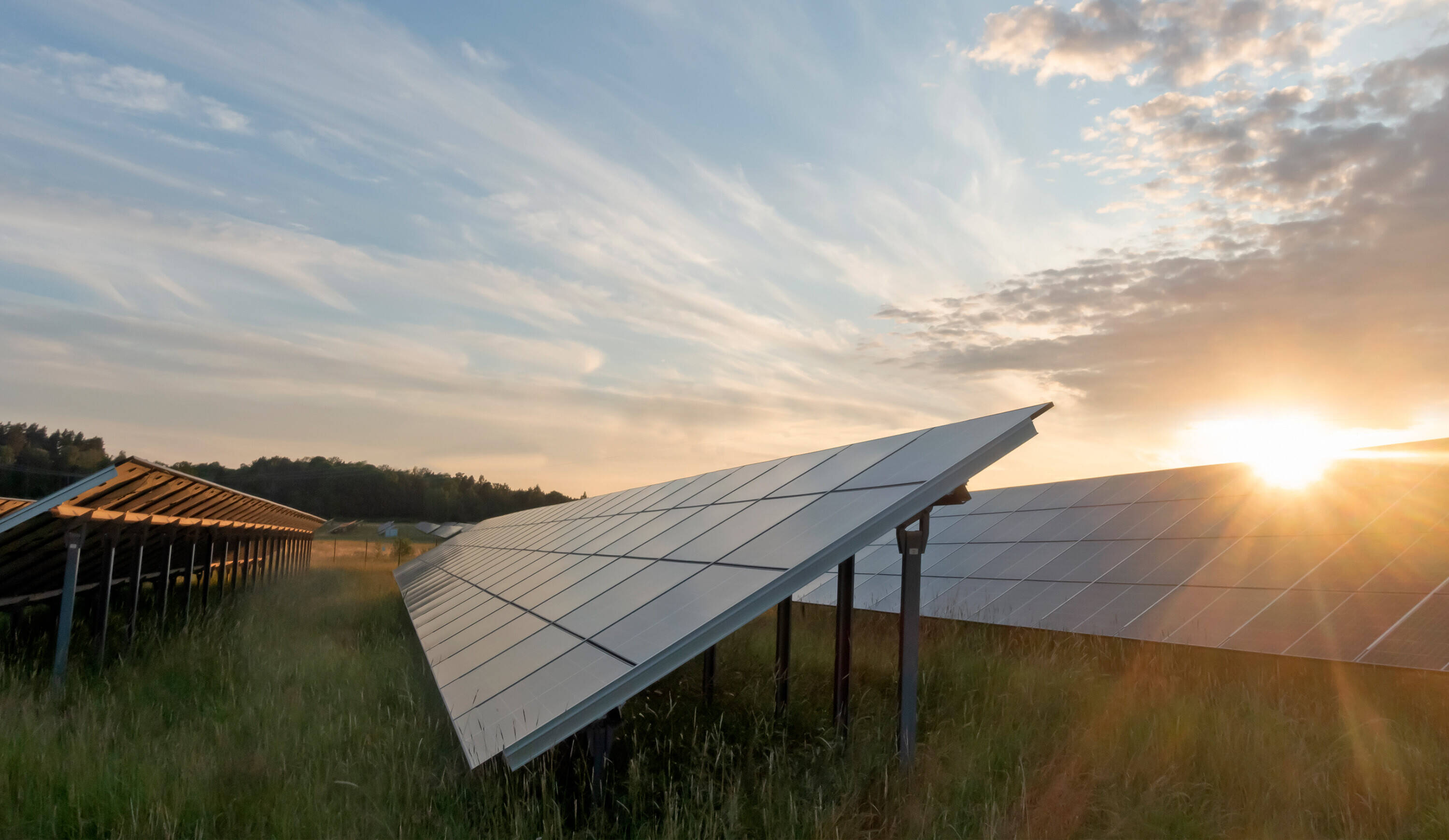
Actions
In 2023, Royal LC Packaging’s near-term science-based greenhouse gas emission reduction targets were validated and approved by the Science Based Targets initiative (SBTi). We collected more data on the lifecycle of our products, including actual emission data from production partners. Furthermore, we have shaped our climate strategy by translating our commitment into an action plan per product category.

01
01
Policies, codes, and commitments
02
Awareness and
implementation
03
Research and
development
04
Data and
reporting
Additionally, all actions mentioned in the chapter ‘Circular Economy’ lead directly to significant emissions reductions in our value chain.
We have joined the United Nations Global Compact Forward Faster Programme and have committed to contribute to a Just Transition by taking concrete actions that address social impacts of climate change mitigation and adaptation measures, in partnership with actors such as with workers, unions, communities and suppliers.
For our additional production partners, the Code of Conduct for Production Partners has been updated and distributed. Included is a commitment to reduce emissions by 2030.
All our key production partners have signed the dedicated Code of Conduct for Key Production Partners. This code includes a binding commitment to reduce scope 1 and 2 emissions 50% by 2030.
To reduce the climate impact of the transportation of our products, a Sustainable Transportation Policy was introduced, supplemented by a Code of Conduct for Logistics Partners.
Policies, codes, and commitments
Our near-term science-based reduction targets have been validated by the Science Based Targets initiative (SBTi). > download approval letter
Our updated Energy Consumption and Greenhouse Gas Emissions Policy and Sustainable Consumption Policy were communicated and implemented.

Next steps
As looking forward is even more important than looking back, below is an overview of actions we are planning to take next.
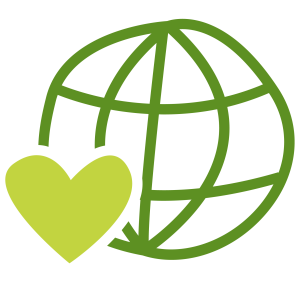
Continue to update our climate action plan towards achieving the 50% emission reduction goal, based on new available data and research, and define missing subgoals and take necessary actions.
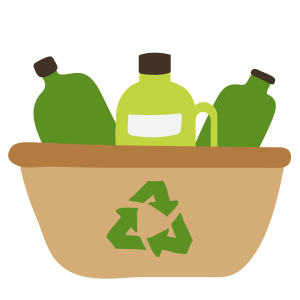
Conduct CO2e Product Lifecycle Assessments for our remaining product categories and where needed, define product category targets and sales KPIs in order to boost low-emission product innovation and the sales of these products.

Use our footprint calculation tool and lifecycle impact visuals to educate our customers so that they can make climate-minded purchasing decisions.

Further improve data quality and availability leading to more reliable data for greenhouse gas reporting and decision making.
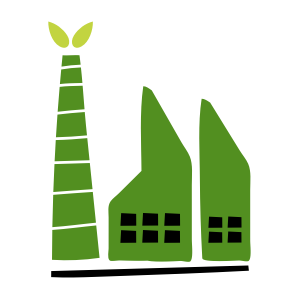
Use energy and CO2e reporting data to support our production partners to gain insight into and easily report on emissions and reductions on an annual basis.
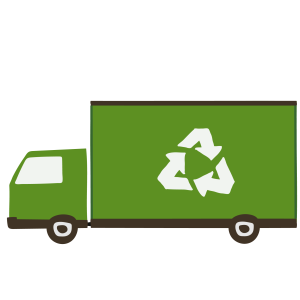
Implement the Logistics Supplier Code of Conduct and Sustainable Transportation Policy and – with our logistics partners – discuss and agree upon emission reduction ambitions related to transportation.


Additional environmental KPIs
In addition to annually reporting on the CO2e emissions in our value chain, Royal LC Packaging also reports on water consumption, energy use and waste production in its own operations. The following graphic shows the results for 2023, compared to 2022:

For more detailed information on the climate impact of our operations and products, please refer to our 2023 Environmental Report.
2023 Environmental Report
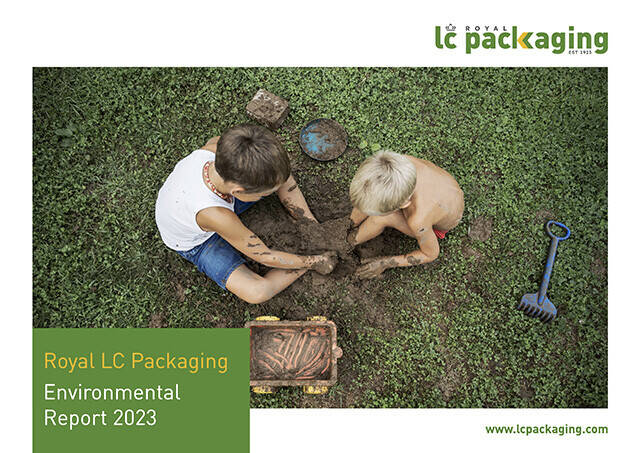
2023 Environmental Report

GRI 305-1, 305-2, 305-3, 305-5
Additionally, all actions mentioned in the chapter ‘Circular Economy’ lead directly to significant emissions reductions in our value chain.

Climate
action
Our goal to reduce emissions in our value chain by 2030, touches upon 6 out of 8 Sustainable Packaging criteria.
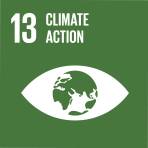
In base year 2021, 274,775 MT CO2e was emitted in LC Packaging’s value chain. Meaning that by 2030, no more than 137,387 MT of CO2e may be emitted in our value chain.
Baseline
20.6% greenhouse gas emission reduction from our value chain compared to base year 2021
Reduce absolute scope 1 and 2 greenhouse gas emissions 50% by 2030, from base year 2021, and reduce scope 3 greenhouse gas emissions 50% within the same timeframe.
Goal
Royal LC Packaging’s emission reduction goal includes the company’s full operations and value chain, which includes the direct (Scope 1) and indirect emissions (Scope 2 and 3) of all our sales offices and warehouses, and our FIBC production facilities in Bangladesh and South Africa
Scope
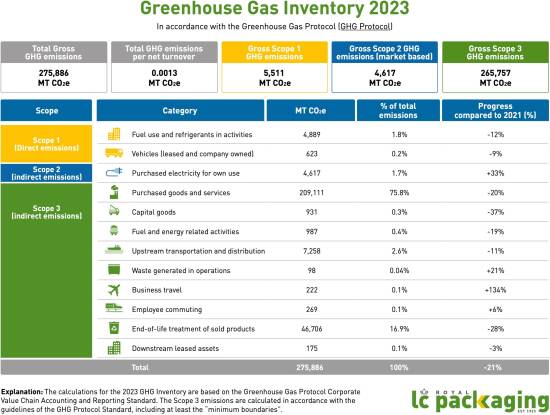
In 2023, 275,886 MT CO2e was emitted in our value chain. This means a decrease of 20.6% (56,832 MT) compared to base year 2021.
Progress on goal
In 2023, data availability and quality improved significantly due to, among other things, better product-related data and lifecycle assessments that were conducted for our main product categories. Based on that data, base year 2021 and GHG Inventory 2022 have been recalculated and rectified in this report. Overall, in 2023, we achieved a 20.6% decrease of CO2e emissions compared to base year 2021, and a decrease of 12.8% compared to 2022.
A summary of the results:
A substantial decrease in product sales compared to base year 2021 drove the main reduction in emissions, as the categories ‘purchased goods’ and ‘end-of-life of sold products’ are closely linked to sales and contribute most to the greenhouse gas inventory.
Emissions related to ‘purchased goods’ decreased by 20.3% and to ‘end-of-life of sold products’ by 27.8%, compared to base year 2021. ‘End-of-life of sold products’ decreased more than ‘purchased goods’, because fewer plastic products were distributed in 2023 compared to 2021.
Upstream transportation and distribution, accounting for 2.6% of the total greenhouse gas inventory, saw a decrease of 11.2% compared to 2021, primarily due to decreased emissions from sea transport, due to less sea freight.
Total scope 1 and 2 emissions increased by 4.2% compared to 2021. This is because production facility Dutch-Bangla Pack (DBPL) – responsible for over 80% of total scope 1 and 2 emissions – had to use more electricity from the grid, instead of its own generators. Adding to this, grid emissions of Bangladesh increased by 8% between 2021 and 2023 according to the ecoinvent database. This led to an increase of DBPL’s scope 1 and 2 CO2e emissions of 409 t CO2e.
In total, we can conclude an 11.7% decrease of scope 1 emissions, and a 33.2% increase of scope 2 emissions.
As scope 1 emissions have been reduced, emissions related to ‘fuel and energy related activities’ have also been reduced (-19.2%).
Emissions related to ‘capital goods’ have decreased by 36.9% due to a smaller investment in capital goods in 2023 compared to 2021.
In 2021, COVID-related travel restrictions limited mobility. Since these constraints were lifted, we have experienced a large growth in emissions related to ‘business travel’ (+134.4%) and employee commuting (+6.1%). Overall, this still has a small impact (0.1% of total emissions).
Explanation
Actions
In 2023, Royal LC Packaging’s near-term science-based greenhouse gas emission reduction targets were validated and approved by the Science Based Targets initiative (SBTi). We collected more data on the lifecycle of our products, including actual emission data from production partners. Furthermore, we have shaped our climate strategy by translating our commitment into an action plan per product category.
01
We have joined the United Nations Global Compact Forward Faster Programme and have committed to contribute to a Just Transition by taking concrete actions that address social impacts of climate change mitigation and adaptation measures, in partnership with actors such as with workers, unions, communities and suppliers.
For our additional production partners, the Code of Conduct for Production Partners has been updated and distributed. Included is a commitment to reduce emissions by 2030.
All our key production partners have signed the dedicated Code of Conduct for Key Production Partners. This code includes a binding commitment to reduce scope 1 and 2 emissions 50% by 2030.
To reduce the climate impact of the transportation of our products, a Sustainable Transportation Policy was introduced, supplemented by a Code of Conduct for Logistics Partners.
Policies, codes,
and commitments
Our near-term science-based reduction targets have been validated by the Science Based Targets initiative (SBTi). > download approval letter
Our updated Energy Consumption and Greenhouse Gas Emissions Policy and Sustainable Consumption Policy were communicated and implemented.
02
Research
and development
Awareness
and implementation
Customers have been educated on the climate impact of our products, using lifecycle impact visuals and our FIBC footprint calculator, which allows us to calculate the exact emissions for each customer scenario.
Short-, medium- and long-term affiliate and department goals, product category targets and sales KPIs have been implemented throughout relevant parts of the organisation, in order to reduce emissions related to our own operations, and boost low-emission product innovation and the sales of these products.
A mandatory online training course on our climate commitment is available for all employees. On 31 December 2023, the course had a completion rate of 77.4%.
Following the workshops organised for employees in 2022, all new hires participate in a dedicated workshop on Royal LC Packaging’s 2030 Ambition, including our climate commitment.
03
CO2e Product Lifecycle assessments have been conducted for Royal LC Packaging’s main product categories, to better understand the environmental impact of our products, identify the high emitting areas in their lifecycle, and identify opportunities to reduce emissions.
Included in the CO2e Product Lifecycle assessment are design scenarios, in order to make strategic sustainable product development decisions, leading to an emission reduction in the lifecycle of our products. This has resulted in circular solutions for FIBCs and our jute baxmatic bag with home-compostable strip, among others.
04
Data
and reporting
Starting FY 2023, our key production partners report annually on their energy use and emissions related to the production of our products.
We have improved the quality and availability of data needed to calculate CO2e emissions, which has led to recalculations of base year 2021. In particular, the quality of data related to Scope 3 categories ‘purchased goods and services’, ‘transportation and distribution’, and ‘end-of-life of sold products’ has significantly improved.

Next steps
As looking forward is even more important than looking back, below is an overview of actions we are planning to take next.
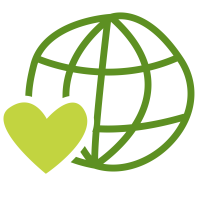
Continue to update our climate action plan towards achieving the 50% emission reduction goal, based on new available data and research, and define missing subgoals and take necessary actions.

Conduct CO2e Product Lifecycle Assessments for our remaining product categories and where needed, define product category targets and sales KPIs in order to boost low-emission product innovation and the sales of these products.

Use our footprint calculation tool and lifecycle impact visuals to educate our customers so that they can make climate-minded purchasing decisions.

Use energy and CO2e reporting data to support our production partners to gain insight into and easily report on emissions and reductions on an annual basis.

Implement the Logistics Supplier Code of Conduct and Sustainable Transportation Policy and – with our logistics partners – discuss and agree upon emission reduction ambitions related to transportation.
Additional environmental KPIs
In addition to annually reporting on the CO2e emissions in our value chain, Royal LC Packaging also reports on water consumption, energy use and waste production in its own operations. The following graphic shows the results for 2023, compared to 2022:
For more detailed information on the climate impact of our operations and products, please refer to our 2023 Environmental Report.
2023 Environmental Report
2023 Environmental Report
